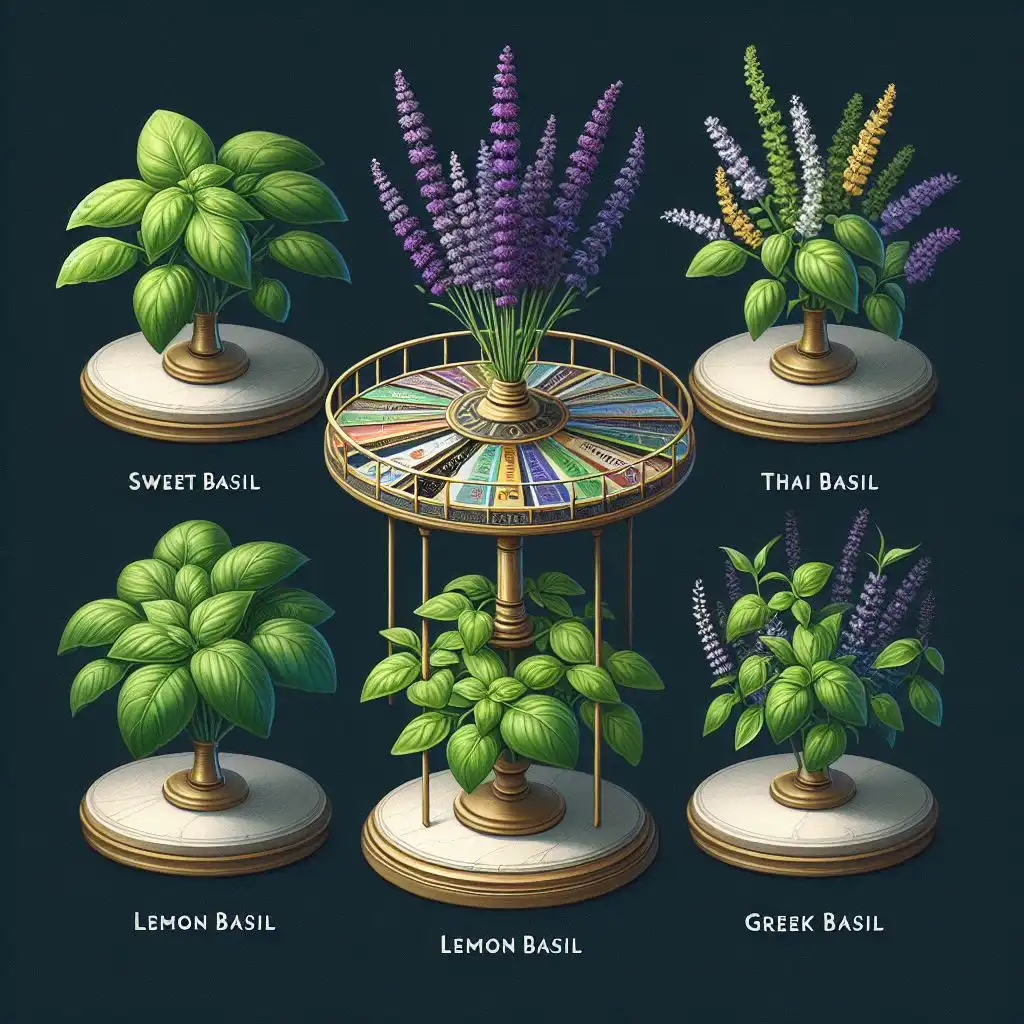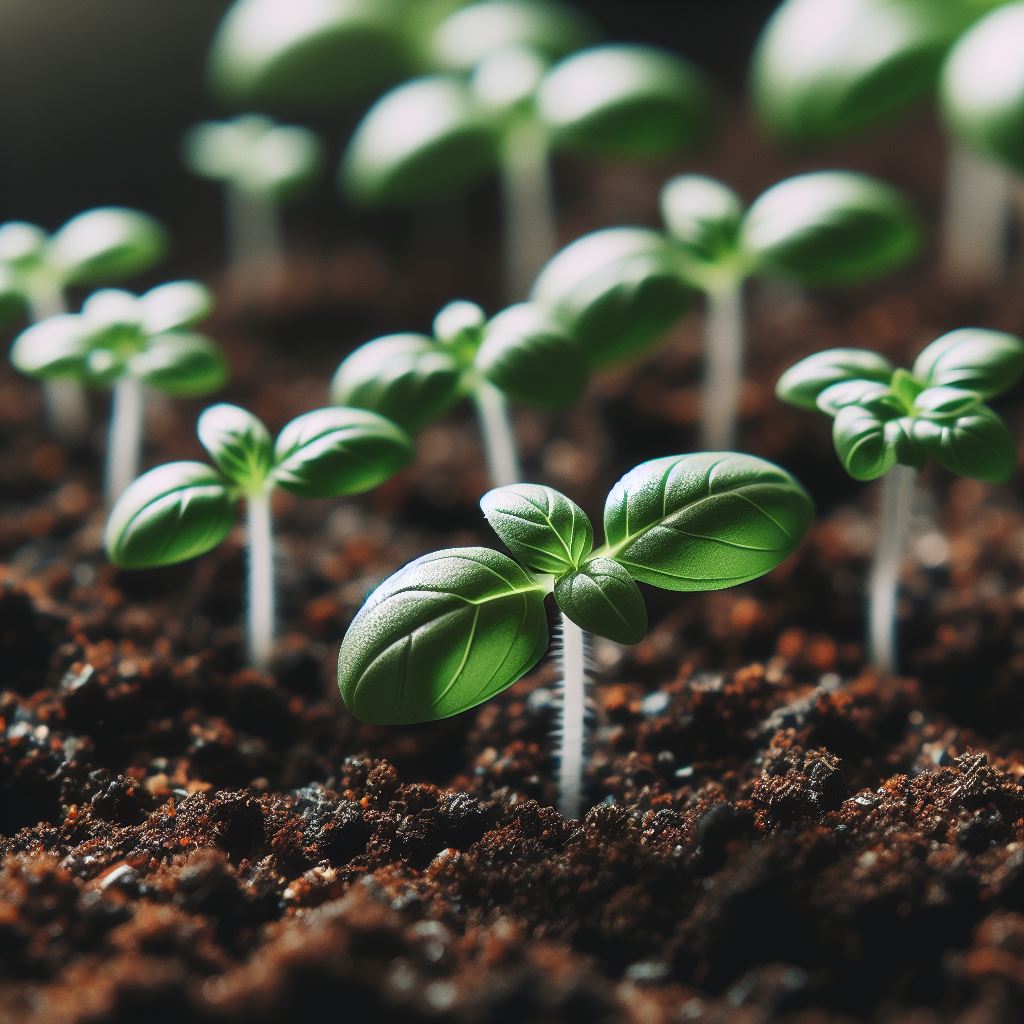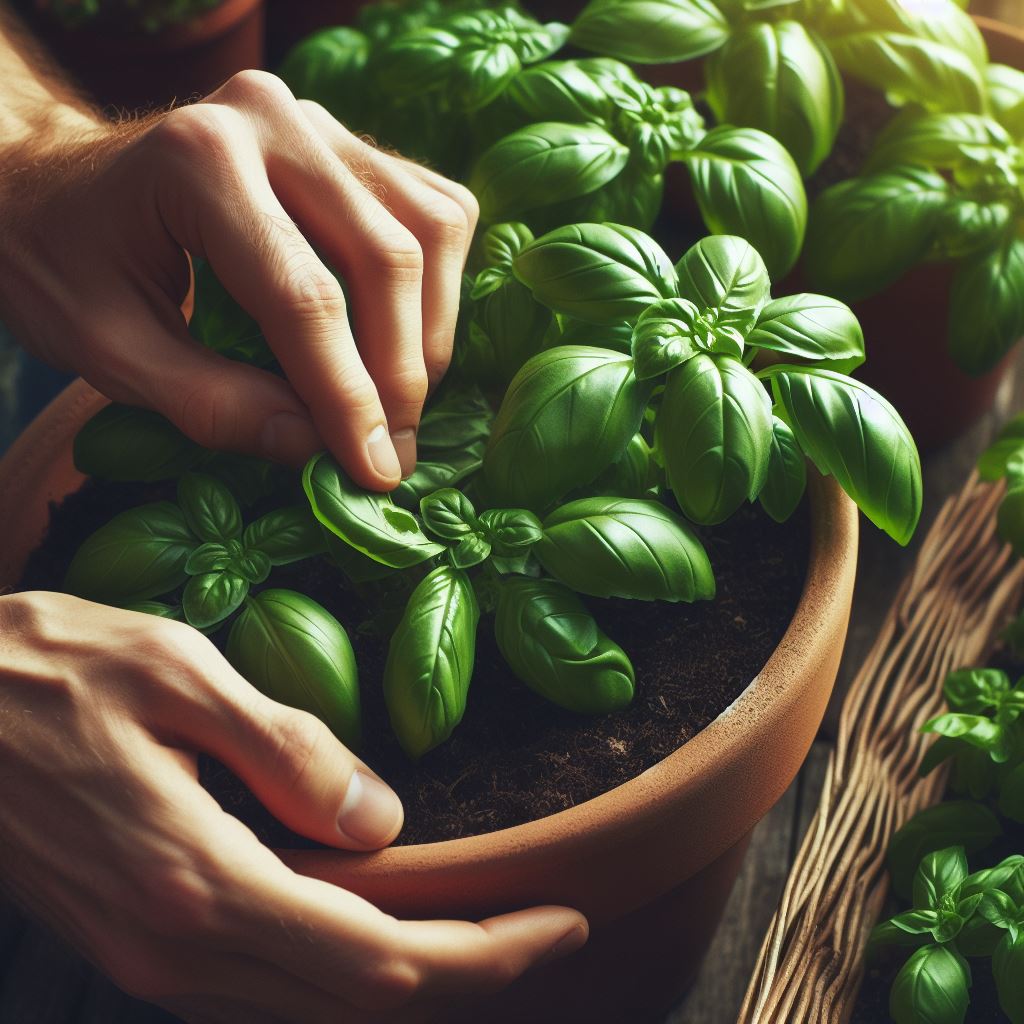Basil is a wonderful herb that can add a lot of flavor and freshness to your dishes. It is also a great plant to grow indoors, as it can provide you with a constant supply of leaves throughout the year, and even help you relax with its soothing aroma. However, growing basil indoors is not as easy as it may seem. Basil needs a lot of attention and care to thrive in an indoor environment. In this guide, I will show you how to care for basil plant indoors and give you some tips and tricks to make your basil happy and healthy.
Choosing the Right Basil Plant
If you want to grow basil indoors, you need to choose the right variety for your space and preferences. There are many types of basil, but some are more suitable for indoor growing than others. Here are some of the best basil varieties for indoor growing:

- Sweet basil: This is the most common and versatile type of basil, with large green leaves and a sweet, aromatic flavor. It is great for making pesto, salads, soups, and sauces. Sweet basil can grow up to 2 feet tall, so you may need to prune it regularly to keep it compact and bushy.
- Thai basil: This is a spicy and exotic type of basil, with purple stems and flowers and a licorice-like flavor. It is used in many Asian dishes, such as curries, stir-fries, and noodle soups. Thai basil can grow up to 3 feet tall, so you may need to stake it or trim it often to prevent it from falling over.
- Lemon basil: This is a citrusy and refreshing type of basil, with small green leaves and a lemony scent and taste. It is ideal for adding a zesty flavor to fish, chicken, salads, and teas. Lemon basil can grow up to 18 inches tall, and it tends to produce more flowers than other types of basil.
- Greek basil: This is a compact and ornamental type of basil, with tiny green leaves and a peppery flavor. It is perfect for growing in small pots or containers, as it only reaches 8 inches in height. It is also very drought-tolerant and easy to care for. Greek basil is often used as a garnish or in salads, sandwiches, and pizzas.
To start your indoor basil plants, you can either sow seeds or buy young plants from reputable nurseries or garden centers. Seeds are cheaper and more fun to grow, but they take longer to germinate and require more attention. Plants are more expensive and less diverse, but they are ready to harvest sooner and require less maintenance.
If you choose to sow seeds, follow these steps:

- Fill a small container with potting soil that is rich in organic matter and well-draining. You can use any container that has drainage holes at the bottom, such as a plastic pot, a yogurt cup, or an egg carton.
- Sprinkle the basil seeds on the soil surface, about 1/4 inch apart. Cover them lightly with a thin layer of soil or vermiculite.
- Water the soil gently until it is moist but not soggy. You can use a spray bottle or a watering can with a fine nozzle to avoid disturbing the seeds.
- Place the container in a warm and bright spot, such as a sunny windowsill or under a grow light. Basil seeds need temperatures between 70°F and 80°F to germinate, and at least 6 hours of light per day to grow well.
- Keep the soil moist but not wet by misting it daily or covering it with a plastic wrap or a dome lid. This will create a humid environment that will help the seeds sprout faster.
- Watch for the seeds to germinate in 5 to 10 days. Once you see the first green shoots emerge from the soil, remove the plastic wrap or dome lid and move the container to a cooler spot (around 65°F) with more light exposure (8 to 10 hours per day).
- Thin out the seedlings when they have two sets of true leaves (the ones that look like basil leaves). You can either snip off the weaker ones with scissors or transplant them to another container if you have enough space.
- Fertilize the seedlings once every two weeks with a diluted liquid fertilizer (half-strength) that is high in nitrogen. This will encourage them to grow faster and produce more leaves.
If you choose to buy plants, follow these steps:
- Choose healthy plants that have bright green leaves and no signs of pests or diseases. Avoid plants that have yellow or brown leaves, wilted stems, or flowers (which indicate that they are old or stressed).
- Transplant the plants to larger containers with fresh potting soil that is rich in organic matter and well-draining. You can use any container that has drainage holes at the bottom, such as a clay pot, a metal bucket, or a wooden crate.
- Water the plants thoroughly until water drains out of the holes. You can use tap water or rainwater, but make sure it is at room temperature and not too cold or hot.
- Place the containers in a sunny spot that receives at least 6 hours of light per day. You can use natural sunlight from a south-facing window or artificial light from a fluorescent bulb or an LED lamp.
- Keep the soil moist but not soggy by watering it when the top inch feels dry to the touch. You can use your finger or a moisture meter to check the soil moisture level. Basil plants do not like to sit in water, as this can cause root rot and fungal infections.
- Fertilize the plants once every two weeks with a diluted liquid fertilizer (half-strength) that is high in nitrogen. This will encourage them to grow faster and produce more leaves.
To care for your indoor basil plants, follow these tips:

- Prune your basil plants regularly to keep them compact and bushy. You can pinch off the tips of the stems or cut them with scissors, leaving at least four pairs of leaves on each stem. This will stimulate new growth and prevent the plants from becoming leggy or woody.
- Harvest your basil leaves often to enjoy their fresh flavor and aroma. You can pick individual leaves or cut whole stems, depending on how much you need. Always harvest from the top of the plant, leaving some leaves behind for the plant to recover. You can use the fresh leaves immediately or store them in the refrigerator for up to a week, wrapped in a damp paper towel and placed in a plastic bag.
- Prevent your basil plants from flowering and going to seed, as this will reduce their flavor and quality. You can do this by pinching off any flower buds that appear on the stems or cutting off the entire flowering stalk. If you want to save some seeds for future planting, you can let one or two plants flower and collect the seeds when they are dry and brown.
- Watch out for pests and diseases that may affect your indoor basil plants. The most common ones are aphids, spider mites, whiteflies, fungus gnats, powdery mildew, and root rot. You can prevent them by keeping your plants healthy, well-watered, well-ventilated, and clean. You can also use organic methods to control them, such as spraying them with water, rubbing them with alcohol, applying neem oil, or introducing beneficial insects.
So what are you waiting for? Start growing basil indoors today and reap its many benefits!
Setting Up Your Indoor Basil Paradise:
Basil is a fragrant and delicious herb that can add flavor to your dishes and brighten up your home. But how do you care for basil plant indoors? Here are some tips to help you grow healthy and happy basil plants in your indoor garden.
Sunlight: Basil loves sunlight, so make sure you place your pots near a window that gets at least 6 hours of bright, indirect light per day. Avoid direct sunlight, as it can scorch the leaves and cause them to wilt. A south-facing or west-facing window is ideal for basil.
Potting and Soil: Choose pots that have drainage holes at the bottom and are large enough to accommodate the roots of your basil plants. Fill them with a loose, organic potting mix that is rich in nutrients and has good drainage. You can also add some compost or worm castings to boost the fertility of the soil.
Watering: Basil needs regular watering to keep the soil moist but not soggy. Overwatering can cause root rot and fungal diseases, while underwatering can cause the leaves to dry out and lose their flavor. Check the soil with your finger before watering and water only when the top inch feels dry. Water thoroughly until the excess water drains out of the holes. Avoid wetting the leaves, as this can promote fungal growth.
Temperature and Humidity: Basil thrives in warm and humid conditions, so try to maintain a temperature range of 65-75°F in your indoor environment. Avoid placing your pots near drafts, heaters, or air conditioners, as these can cause temperature fluctuations and stress the plants. To increase the humidity around your basil plants, you can use a pebble tray filled with water and place your pots on top of it. You can also mist your plants lightly with a spray bottle every few days.
Basil Plant Care Essentials:
Basil is a popular herb that can add flavor and aroma to your dishes. But how do you care for basil plant indoors? Here are some tips to help you grow healthy and productive basil plants in your home.
Fertilizing: Basil plants need regular feeding to grow well and produce more leaves. You can use a balanced fertilizer, such as 10-10-10, diluted to half strength every two weeks during the growing season. Alternatively, you can use an organic fertilizer, such as fish emulsion or compost tea, once a month. Avoid over-fertilizing, as this can cause leaf burn and reduce the flavor of the basil.
Pruning and Harvesting: Pruning and harvesting are essential for keeping your basil plants bushy and productive. You should pinch back the stems regularly, removing the topmost pair of leaves and any flower buds that may form. This will encourage the plant to branch out and produce more leaves. You can harvest the leaves as you need them, or cut off entire stems and store them in a glass of water or in the refrigerator. You can also dry or freeze the leaves for later use.
Pest and Disease Control: Basil plants can be affected by some common pests and diseases, such as aphids, whiteflies, spider mites, fungal infections, and bacterial wilt. To prevent these problems, you should keep your plants healthy, water them properly, and provide good air circulation. You can also use organic methods to control pests and diseases, such as spraying neem oil, which is a natural insecticide and fungicide, or handpicking any insects that you see on the plants. If your plants are severely infected or wilted, you may have to discard them and start over with new ones.
Troubleshooting Common Basil Problems:
Basil is a popular herb that can add flavor and aroma to your dishes. But growing basil indoors can be tricky, especially if you don’t know how to care for basil plant indoors properly. Here are some common problems that basil plants may face, and how to solve them or prevent them from happening.
- Leggy growth: This happens when your basil plant grows too tall and thin, with few leaves and long stems. This is usually caused by lack of sunlight or overcrowding. To prevent this, make sure your basil plant gets at least 6 hours of bright, indirect light per day, and prune it regularly to encourage bushy growth. You can also pinch off the flowers as they appear, as they can reduce the flavor and quality of the leaves.
- Leaf drop: This happens when your basil plant loses its leaves, leaving bare stems behind. This can be caused by overwatering, underwatering, low humidity, or temperature fluctuations. To prevent this, water your basil plant only when the top inch of the soil feels dry to the touch, and avoid letting it sit in soggy soil. You can also mist your basil plant occasionally to increase the humidity around it, and keep it away from drafts or heat sources that can cause sudden changes in temperature.
- Yellowing leaves: This happens when your basil plant’s leaves turn yellow or brown, and may fall off. This can be caused by nutrient deficiency, pest infestation, or disease. To prevent this, fertilize your basil plant once a month with a balanced organic fertilizer, and check it regularly for signs of pests or diseases. You can also remove any affected leaves and dispose of them properly to prevent the spread of infection. If the problem persists, you may need to repot your basil plant in fresh soil with good drainage.
How to Care for Basil Plant Indoors
Basil is one of the most popular and versatile herbs that you can grow indoors. It adds a fresh and aromatic flavor to many dishes, from salads and sauces to soups and pizzas. Basil is also a great ingredient for DIY projects, such as making pesto, infused oils, or herbal teas. Here are some tips on how to care for your basil plant indoors and enjoy its bounty.
- Choose a sunny spot for your basil plant. Basil loves sunlight and needs at least six hours of direct light per day. You can place your basil near a south-facing window or use artificial lights if needed.
- Water your basil regularly but not too much. Basil likes moist but well-drained soil. You can check the soil by inserting your finger about an inch deep. If it feels dry, water your basil until the water drains out of the bottom of the pot. Avoid overwatering or letting the soil get soggy, as this can cause root rot and fungal diseases.
- Prune your basil often to encourage bushy growth and prevent flowering. You can pinch off the tips of the stems just above a pair of leaves. This will stimulate new branches and more leaves. You can also remove any flowers that appear, as they will reduce the flavor and quality of the leaves.
- Fertilize your basil every two weeks with a balanced organic fertilizer. You can use a liquid or granular fertilizer diluted according to the package directions. Fertilizing your basil will provide it with essential nutrients and boost its growth and flavor.
- Harvest your basil frequently and enjoy its freshness. You can harvest basil leaves anytime you need them for your recipes or projects. Just cut off the stems with scissors or a sharp knife, leaving at least one-third of the plant intact. You can store the harvested leaves in a plastic bag in the refrigerator for up to a week, or freeze them for longer use.
Basil is a wonderful herb that can enhance your culinary and creative endeavors. By following these simple steps, you can grow healthy and productive basil plants indoors and savor their delicious aroma and taste.
Conclusion:
You have learned how to care for basil plant indoors by following some simple steps. You know how to choose the right pot, soil, location, and watering schedule for your herb. You also know how to prune, harvest, and propagate your basil plant to enjoy its fresh leaves all year round. Growing basil indoors is a rewarding and fun hobby that can brighten up your home and your dishes. Congratulations on becoming a successful indoor gardener!
FAQ about Growing Basil Indoors:
What are the best types of basil for indoor growing?
Sweet basil, Thai basil, Lemon basil, Greek basil are all good choices. Choose one that suits your taste and space.
Should I start from seeds or buy plants?
Seeds are cheaper but take longer. Plants are quicker but more expensive.
How do I start seeds indoors?
Use well-draining soil, plant seeds 1/4 inch apart, water gently, and keep warm and bright (around 70°F and 6+ hours of light).
How much light does basil need?
At least 6 hours of bright, indirect sunlight per day. South-facing window is ideal.
How often should I water basil?
Water when the top inch of soil feels dry, but avoid overwatering.
Do I need to fertilize basil?
Yes, fertilize every 2 weeks with a diluted balanced fertilizer during the growing season.
How do I prune basil?
Pinch off stem tips or cut with scissors, leaving at least 4 pairs of leaves per stem. This encourages branching and prevents leggy growth.
How do I harvest basil?
Pick individual leaves or cut whole stems, always leaving some behind for the plant to recover.
My basil plant is leggy and thin.
This is likely due to lack of light. Move it to a brighter spot and prune regularly.
My basil leaves are drooping or falling off.
This could be caused by overwatering, underwatering, low humidity, or temperature fluctuations. Check the soil moisture and adjust watering accordingly. Increase humidity with a pebble tray or misting. Keep the plant away from drafts and heat sources.
My basil leaves are turning yellow or brown.
This could be due to nutrient deficiency, pests, or disease. Fertilize regularly, check for pests, and remove affected leaves. Repot if necessary.
